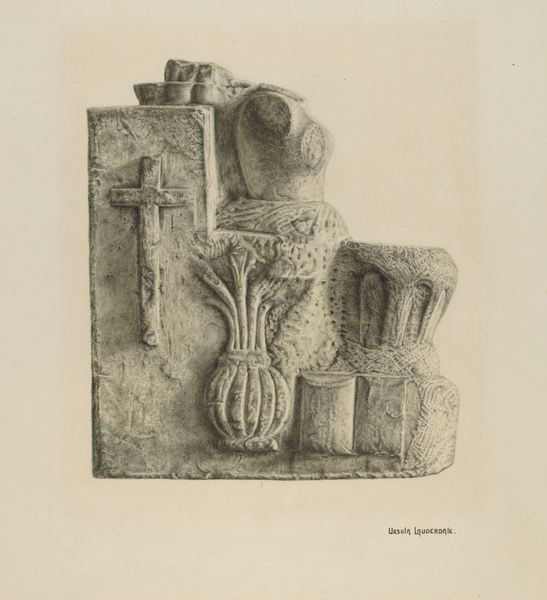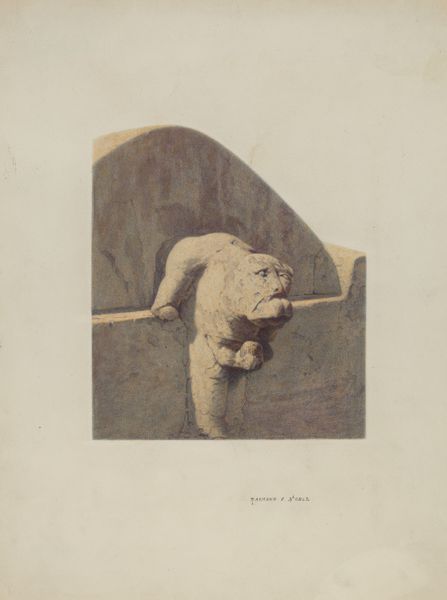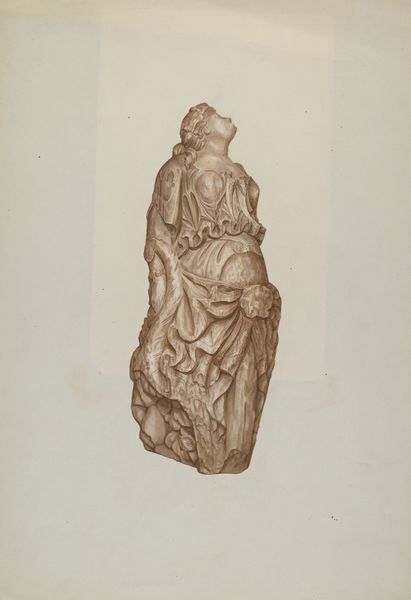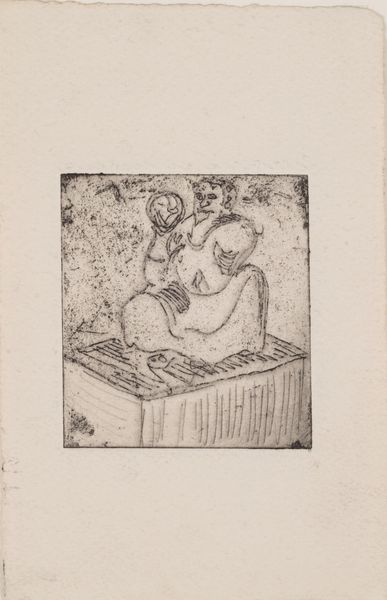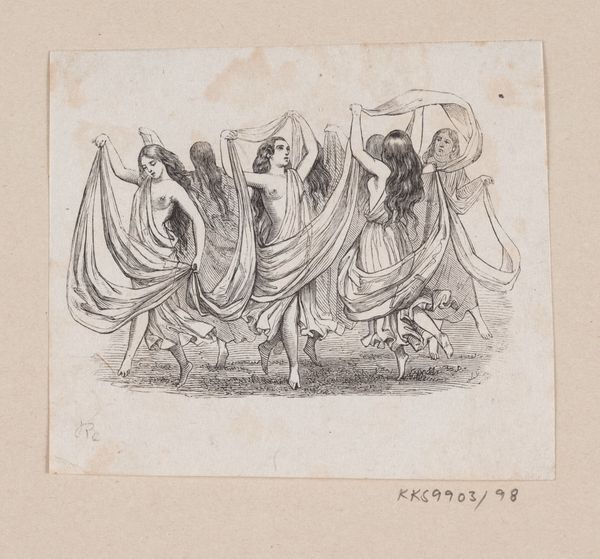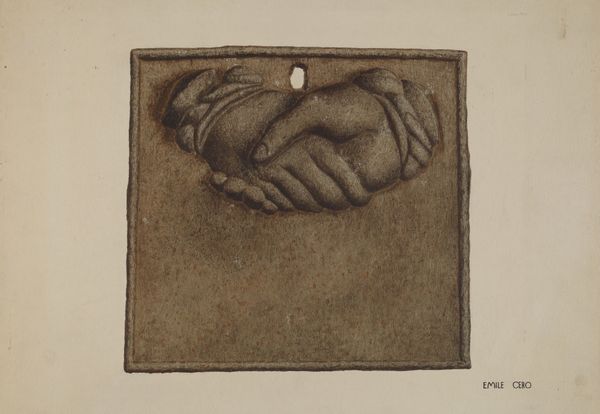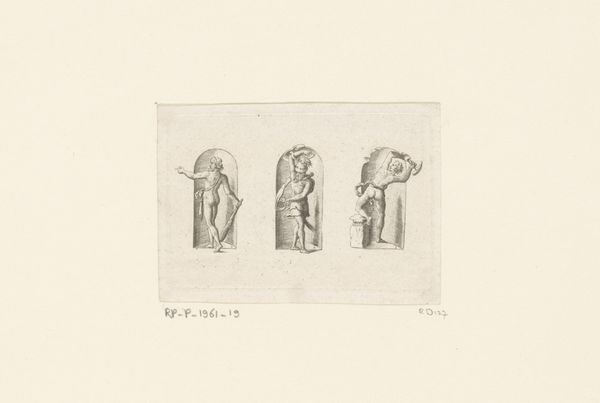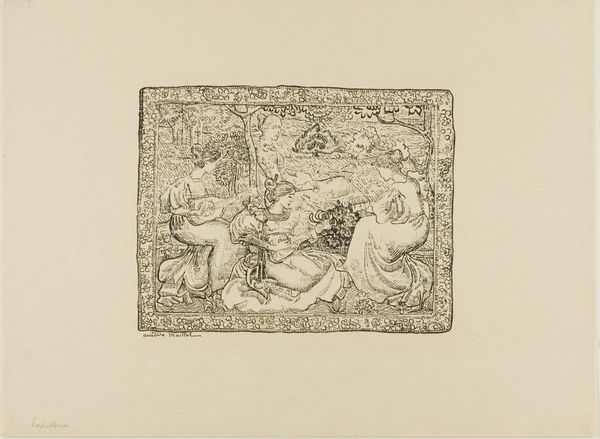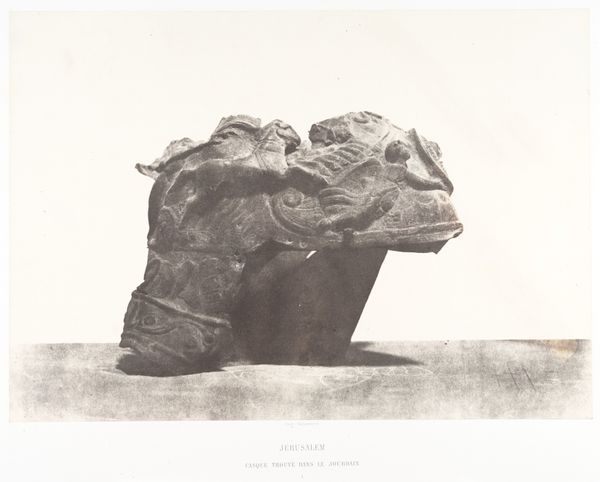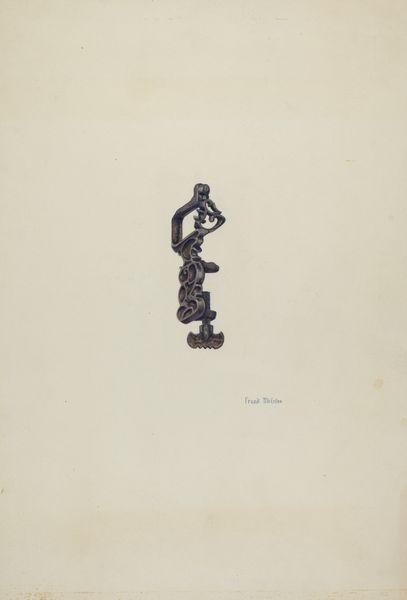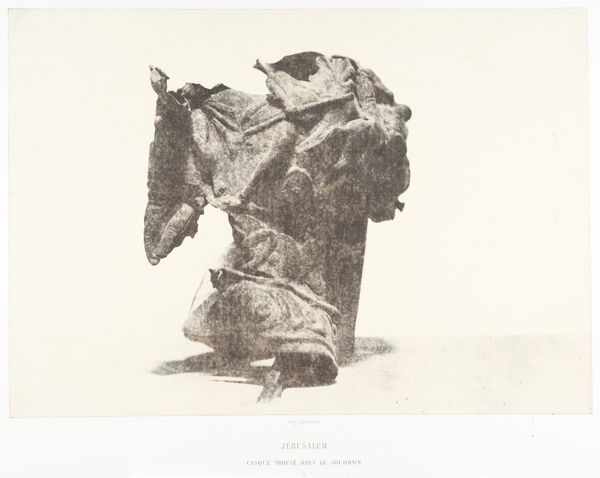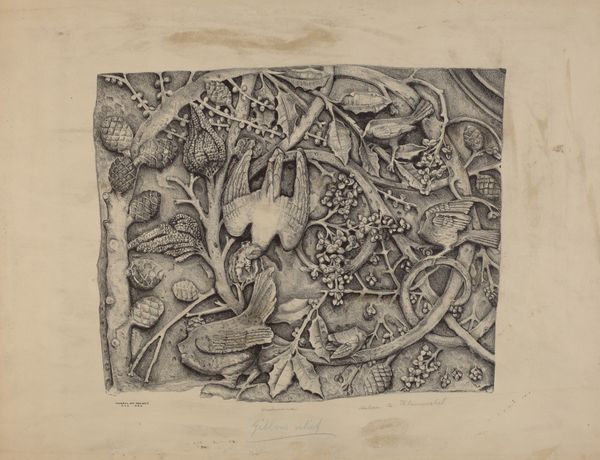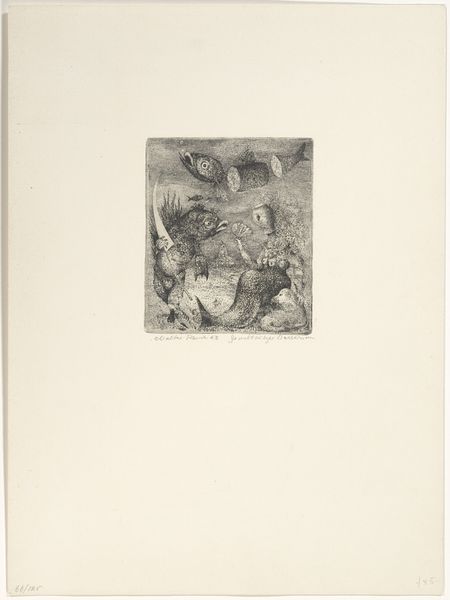
drawing, pencil, graphite
#
pencil drawn
#
drawing
#
form
#
pencil drawing
#
geometric
#
pencil
#
graphite
Dimensions: overall: 31.7 x 29.2 cm (12 1/2 x 11 1/2 in.) Original IAD Object: 3 1/2"thick; 8 1/2"high; 8"deep
Copyright: National Gallery of Art: CC0 1.0
Curator: Ursula Lauderdale’s graphite drawing, "Small Stone Fountain," dates to around 1942. What strikes you most about it? Editor: The textures. The rough stone against the almost delicate botanical forms, and the way the artist has captured those different surfaces with what looks like incredibly subtle variations in shading. There’s something a little unsettling about that contrast too. Curator: I see what you mean. Fountains, particularly in that period, often represented access to life-giving resources, but here the geometric solidity of the architecture seems to dominate. Note, though, how Lauderdale includes organic elements pressing against the structural facade: the serpent, for example, with clear symbolic allusions. Editor: Absolutely. The serpent shedding its skin would have alluded to renewal, and new life, in many cultures, but within what cultural context are we to view this fountain? It appears highly stylized, lacking direct historical precedent for the exact amalgamation of visual forms. Curator: True. Its creation during the war perhaps informs that abstraction. Lauderdale had close ties to the New York art world and was connected to many European artists fleeing the conflict. The fountain could be read as a symbol of hope but rendered through the fractured lens of a world at war, ancient archetypes destabilized by current conflict. Editor: Yes, this approach effectively reveals the psychological dimension, capturing a broader anxiety related to the changing of ages and lost paradises, visualized via architectural and biological struggle. I almost see this drawing as a psychoanalytical object relating the individual and society. Curator: Interesting… The drawing encourages considering how we reconcile symbolic hopes with brutal realities, then and perhaps now. Editor: Indeed. It's a stark reminder of how we internalize, then project our inner tensions, utilizing any means available, as survival mechanisms. Curator: Thanks. A fascinating consideration, particularly concerning the context of visual history.
Comments
No comments
Be the first to comment and join the conversation on the ultimate creative platform.
